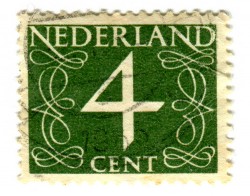
Image thanks to svilen001
Even the most experienced email marketers can make mistakes (it’s OK).
If you do, the best thing to do is to admit it and correct it.
For example, I got an email yesterday from a top-notch internet marketer and copywriter. He said that he’d gotten a complaint that he was pitching too much, and offering too little content in return. He wanted to know (and I applaud him for this) if he’d lost his way. If so, he wanted to fix it.
Here’s how to tell if your email newsletter marketing has gone wrong and some tips for fixing it.
Selling too much
People don’t sign up for pitches – they sign up for information. They want solutions to their problems: whether that’s how to set up a twitter account, how to build an app, or tips for growing an organic vegetable garden.
Newsletter signups are giving you permission to talk (you did get permission, right?), but not to sell, sell, sell.
The internet marketer’s newsletters were helpful. However, there was a problem. He sent one monthly newsletter, and then six or seven promotional emails. And, you couldn’t tell which was which.
Selling in newsletters, or along with newsletters, is fine. Just mix it up. As a general rule, send three or four informational, helpful emails for every promotional one.
Not interacting with your subscribers
Do you answer your emails? I realize this can be tough if you get hundreds of them, but if your inbox is not that full, send out answers to reader questions. Heck, they could become topics (with permission, of course) for another newsletter or a blog post (a win-win for everyone).
No reader exclusives
If you want to sell more, give readers a reason to want to hear from you. Why not an incentive in the newsletter itself? Make subscribing special by offering something non-subscribers don’t get. Get raving fans.
- Special offers available only to subscribers
- First look at new products
- Sign up for separate advance notice discount list
- Offers that are fun: the Leave the Office Early Day sale!
- First crack at entering a contest
No product tips/success stories
Show your readers proof your product works, or share tips on better ways to use it
- regular updates (in the newsletter) on success other customers have had
- send cheat sheets or point out hidden “easter eggs”
- point out new ways your other customers have used your product
Essentially, make sure you engage with your readers. Bring them in to the conversation (and make it a conversation, rather than a speech), encourage their feedback, and respond to their questions or concerns.
If there is a problem, address it quickly, particularly if it’s a bug or a public failure (your site is down for an extended period, you’ve been hacked, etc).
Share your thoughts
What do you think? How do you handle your email newsletters? How often do you send newsletters? Marketing messages?
 If you’re looking at a razor or a kitchen knife, an edge is important. A sharp edge will remove a beard or cut carrots. A dull one will cut you (because you push harder).
If you’re looking at a razor or a kitchen knife, an edge is important. A sharp edge will remove a beard or cut carrots. A dull one will cut you (because you push harder).



